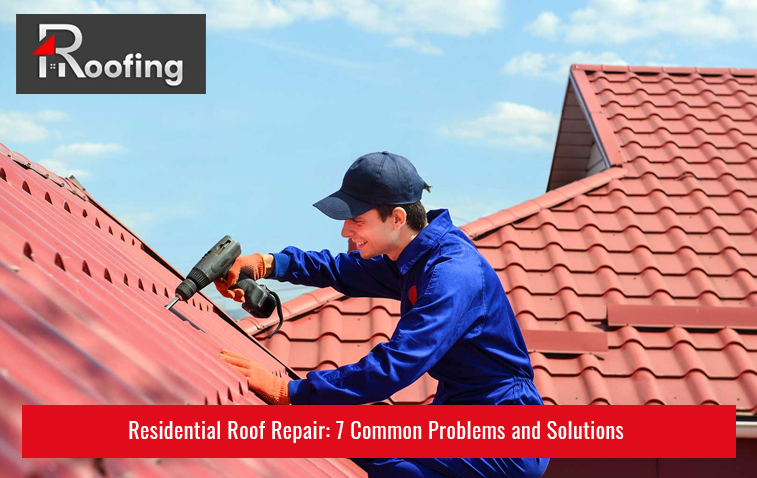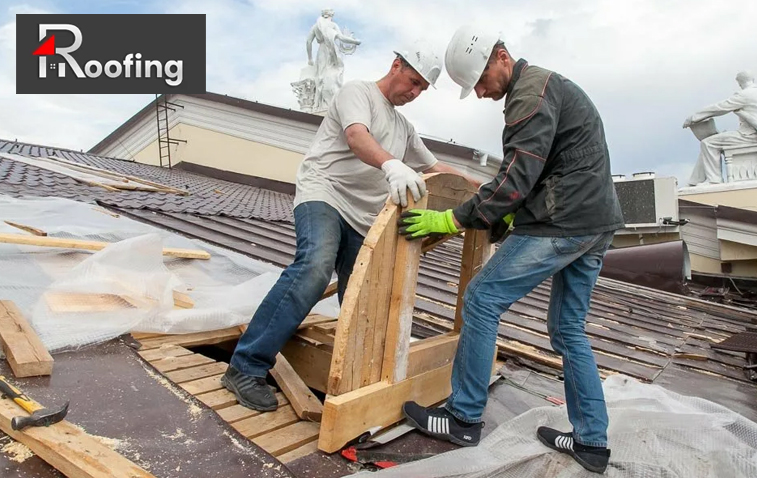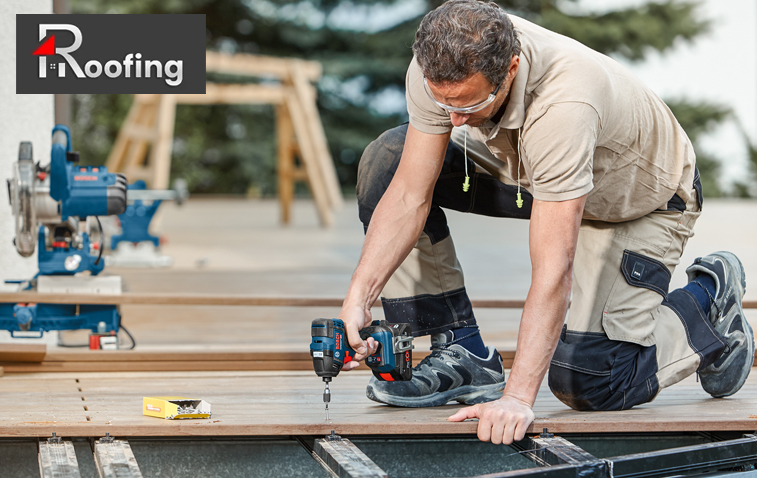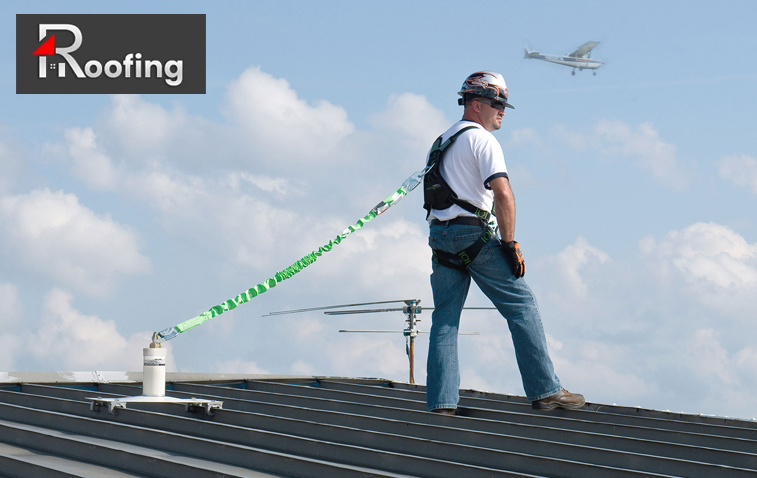Residential Roof Repair: 7 Common Problems and Solutions
The roof of a home plays a crucial role in protecting the structure, its occupants, and their belongings. However, like any part of a house, roofs are subject to wear and tear, environmental stresses, and occasional damage. Recognizing and addressing common roofing problems promptly can prevent minor issues from escalating into major, costly repairs. Homeowners who understand the signs of roof damage and have knowledge of basic repair techniques can significantly extend the life of their roofs and maintain the integrity of their homes.

From leaks and missing shingles to more complex issues like structural damage, understanding common roofing problems and their solutions empowers homeowners to take proactive measures in roof maintenance. By familiarizing themselves with these common issues and effective solutions, homeowners can make informed decisions about when to attempt DIY repairs and when to seek professional assistance, ultimately ensuring the longevity and effectiveness of their home’s most important protective feature.
Leaky Roofs
Leaky roofs represent one of the most frequent and potentially damaging issues homeowners face. Addressing these common roofing problems and implementing effective solutions is crucial, as water infiltration can lead to significant issues such as structural damage, mold growth, and compromised insulation.
Signs of a Leaky Roof:
- Water stains on ceilings or walls
- Damp spots in the attic
- Peeling paint or wallpaper
- Visible mold or mildew growth
- Dripping sounds during rain
Common Causes:
- Damaged or missing shingles
- Cracked flashing around chimneys, vents, or skylights
- Ice dams in colder climates
- Clogged gutters causing water backup
Solutions:
- Locate the Source: Trace the leak back to its origin, which may not always be directly above the visible water stain.
- Temporary Fixes: For immediate protection, use a tarp to cover the affected area or apply roofing cement to small holes or cracks.
- Replace Damaged Shingles: Carefully remove damaged shingles and replace them with new ones, ensuring proper overlap and secure fastening.
- Repair Flashing: Reseal or replace damaged flashing around roof penetrations.
- Clean and Maintain Gutters: Regularly clean gutters and ensure proper drainage to prevent water backup.
- Address Ice Dams: Improve attic insulation and ventilation to prevent ice dam formation in cold climates.
Remember, while some minor repairs can be DIY projects, extensive water damage or complex leaks may require professional assessment and repair.
Missing or Damaged Shingles
Shingles are the first line of defense for most residential roofs. Missing or damaged shingles can leave your roof vulnerable to water infiltration and further damage.
Signs of Shingle Problems:
- Visible gaps in the roof’s surface
- Shingles in the yard after strong winds
- Curling, cracking, or blistering shingles
- Granules collecting in gutters
Common Causes:
- Wind damage
- Age and weathering
- Poor installation
- Impact from falling branches or hail
Solutions:
- Visual Inspection: Regularly inspect your roof, especially after severe weather events, to identify missing or damaged shingles.
- Replace Individual Shingles: For isolated damage, carefully remove the damaged shingle and replace it with a new one of the same type and color.
- Secure Loose Shingles: If shingles are loose but not damaged, secure them with roofing nails and seal the nail heads with roofing cement.
- Address Underlying Issues: If shingles are consistently failing, investigate potential underlying problems like poor ventilation or substandard materials.
- Consider Partial Reroofing: For sections with extensive damage, partial reroofing might be more cost-effective than individual shingle replacement.
When replacing shingles, ensure proper overlap and alignment with existing shingles to maintain the roof’s water-shedding capability.

Flashing Failures
Flashing is crucial for sealing areas where the roof surface is interrupted, such as around chimneys, vents, and skylights. Damaged or improperly installed flashing can lead to significant leaks.
Signs of Flashing Problems:
- Water stains near chimneys or vents
- Visible gaps or separation in flashing materials
- Rust or corrosion on metal flashing
- Loose or missing flashing pieces
Common Causes:
- Weathering and aging
- Poor installation
- Thermal expansion and contraction
- Physical damage from impact or foot traffic
Solutions:
- Inspect Regularly: Check flashing around all roof penetrations and along roof edges during routine roof inspections.
- Reseal Flashing: For minor separations, clean the area and apply a new bead of roofing sealant to create a watertight seal.
- Replace Damaged Sections: If flashing is severely damaged or corroded, remove the affected section and replace it with new flashing material.
- Improve Installation Techniques: When replacing flashing, ensure proper overlap and use appropriate fasteners and sealants for a durable installation.
- Consider Upgrading Materials: In areas prone to severe weather, consider upgrading to more durable flashing materials like copper or stainless steel.
Proper flashing installation and maintenance are critical for preventing water infiltration at vulnerable points in the roof structure.
Ponding Water
Ponding water, or standing water that remains on a roof for more than 48 hours after rainfall, can lead to premature aging of roofing materials and potential leaks.
Signs of Ponding Water:
- Visible pools of water on the roof surface
- Algae or vegetation growth on the roof
- Sagging or depressed areas in the roof structure
- Water stains or damage to the interior ceiling
Common Causes:
- Poor roof design or inadequate slope
- Clogged or improperly installed drainage systems
- Structural settling or deflection
- HVAC units or other equipment creating low spots
Solutions:
- Improve Drainage: Install additional drains or scuppers to facilitate water removal from the roof surface.
- Create Proper Slope: Use tapered insulation or other materials to create or improve roof slope towards drainage points.
- Regular Maintenance: Keep roof surfaces, drains, and gutters clear of debris to ensure proper water flow.
- Install Crickets: Add triangular-shaped raised areas behind chimneys or other large obstructions to divert water flow.
- Address Structural Issues: If ponding is due to structural sagging, consult a professional to assess and address the underlying problem.
Addressing ponding water promptly is crucial for maintaining the integrity and longevity of the roofing system.
Shrinkage and Blistering
Shrinkage and blistering frequently occur in flat or low-slope roofs with membrane coverings, such as EPDM, TPO, or built-metal roofup roofing. Addressing these common roofing problems can prevent these issues from compromising the roof’s performance and longevity.
Signs of Shrinkage and Blistering:
- Visible pulling away of the membrane at roof edges or flashings
- Cracks or splits in the roofing material
- Raised bubbles or blisters on the roof surface
- Exposed underlying layers or insulation
Common Causes:
- Aging and weathering of roofing materials
- Poor installation or inadequate adhesion
- Trapped moisture or air beneath the membrane
- Thermal expansion and contraction
Solutions:
- Regular Inspections: Conduct routine checks to identify early signs of shrinkage or blistering.
- Repair Small Blisters: For small blisters, carefully cut, dry the area, and re-adhere the membrane using appropriate adhesives.
- Replace Damaged Sections: For extensive shrinkage or large blisters, remove the affected area and install new membrane material.
- Improve Ventilation: Ensure proper attic or roof deck ventilation to reduce temperature fluctuations and moisture buildup.
- Consider Roof Coatings: Apply reflective roof coatings to reduce thermal stress and extend the life of the membrane.
Addressing shrinkage and blistering promptly can prevent more extensive damage and prolong the life of the roofing membrane.
Structural Damage
Structural damage to a roof can compromise its ability to support loads and maintain proper drainage, leading to a host of secondary problems.
Signs of Structural Damage:
- Visible sagging or dips in the roofline
- Cracked or split roof framing members
- Interior ceiling cracks or separation
- Doors or windows that suddenly become difficult to open or close
Common Causes:
- Excessive snow or water loads
- Inadequate initial design or materials
- Termite or other pest damage
- Foundation settling or movement
Solutions:
- Professional Assessment: Structural issues require evaluation by a qualified structural engineer or roofing professional.
- Reinforce Roof Framing: Install additional support beams or rafters to distribute loads more effectively.
- Replace Damaged Components: Remove and replace any rotted, cracked, or otherwise compromised structural elements.
- Address Underlying Issues: Identify and rectify any foundation problems or pest infestations contributing to the structural damage.
- Improve Load Distribution: Consider redesigning the roof structure to better handle anticipated loads, especially in areas prone to heavy snow.
Structural damage is a serious issue that often requires professional intervention to ensure the safety and integrity of the entire building.

Ventilation and Insulation Problems
Proper attic ventilation and insulation are crucial for maintaining a healthy roof system and energy-efficient home.
Signs of Ventilation and Insulation Issues:
- Excessive heat buildup in the attic
- Ice dam formation in winter
- Moisture accumulation and mold growth in the attic
- Premature aging of roofing materials
- High energy bills
Common Causes:
- Inadequate attic ventilation
- Blocked soffit or ridge vents
- Insufficient or improperly installed insulation
- Air leaks between living spaces and the attic
Solutions:
- Assess Current Ventilation: Calculate the required ventilation based on attic size and ensure a balanced system of intake and exhaust vents.
- Install Additional Vents: Add soffit, ridge, or other types of vents as needed to improve air circulation.
- Clear Blocked Vents: Regularly check and clear any obstructions from existing vents, including insulation that may be blocking soffit vents.
- Upgrade Insulation: Ensure proper insulation levels in the attic, paying special attention to even distribution and avoiding compressed areas.
- Seal Air Leaks: Identify and seal any air leaks between living spaces and the attic to prevent warm, moist air from entering the attic space.
- Consider Radiant Barriers: In hot climates, installing radiant barriers can help reduce heat gain in the attic.
Proper ventilation and insulation not only protect the roof structure but also contribute to overall home energy efficiency and comfort.
Addressing these seven common issues with residential roofs promptly and effectively can greatly extend your roof’s lifespan and safeguard your home from extensive damage. Regular inspections, timely maintenance, and a proactive approach to repairs are crucial for maintaining a healthy roofing system. While some minor repairs might be manageable as DIY projects, knowing when to seek professional help for roofing problems is essential. By staying informed about common roofing problems and their solutions, homeowners can make better decisions about roof care and maintenance, saving time, money, and stress in the long run.




